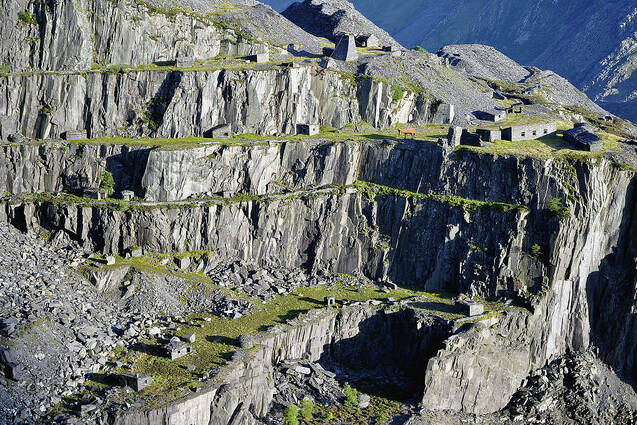We're blessed in North Wales to have more than our fair share of UNESCO World Heritage sites but there could be an addition to our burgeoning heritage portfolio if campaigners get their way.
Joining the stately Pontcysyllte Aqueduct in Llangollen and the numerous medieval castles of Edward I, the stark and stoic landscape of Snowdonia's slate mining industry has been nominated by the UK government for World Heritage status.
The slate industry has left an indelible mark on Gwynedd and Snowdonia. The remains of workings above and below ground, towering slate tips, abandoned quarrymens' cottages and icy blue ponds dot the hillsides from Blaenau to Bethesda and beyond.
At its height the slate industry was said to roof the world, so massive were the exports of blue gold from the shores of North Wales.
Helen Whately, heritage minister, is the individual responsible for submitting the application to UNESCO. She said: “This nomination is an excellent way to recognise the importance of Wales’s slate mining heritage and will bring benefits not only to Gwynedd but the whole of north Wales by attracting visitors, boosting investment and creating jobs.”
Slate has been quarried in North Wales for almost 2,000 years but demand reached a peak in the late 19th century as the expansion of towns and cities accelerated to keep pace with the Industrial Revolution. Used to roof all types of buildings - from innocuous workers' cottages to vast factories and grand civic centres - the Welsh slate industry produced approximately 485,000 tonnes of slate a year and employed more than 17,000 people.
Even today slate is highly prized for its versatility as a roofing material; it is incredibly hardwearing but light and waterproof (a useful feature, given the Welsh weather).
Lord Dafydd Elis-Thomas, the Welsh government's deputy minister for culture, sport and tourism, said: “We are delighted that the slate landscape of north Wales will be put forward as the next UK nomination for inscription as a world heritage site. Wales has a unique and varied industrial heritage that is rightly celebrated."
The region will now be considered by the International Council on Monuments and Sites before being considered for inscription at the World Heritage Committee meeting in 2021.
Councillor Gareth Thomas, Gwynedd council’s cabinet member for economic development, said: “Not only is the bid helping to celebrate and recognise our unique culture, heritage and language, but it will also open the door for economic regeneration across the area, including the existing quarrying industry, traditional and craft skills, along with looking to create sustainable tourism and high-value job opportunities in Gwynedd.”
If you're keen to learn more about our slate mining heritage, the National Slate Museum is located just a short walk from the hotel. With free entry this living history museum offers a fascinating glimpse into the daily lives of the men and women who worked in extremely demanding conditions to meet demand for this precious Welsh commodity.
From the hotel, you can also get up close and personal with the landscape by walking a section of the Llwybr Llech Eryri(the Snowdonia Slate Trail). The route takes you up above Llanberis with stunning views of Llyn Padarn and the Vivian and Dinorwic Quarries before descending into Waunfawr.

